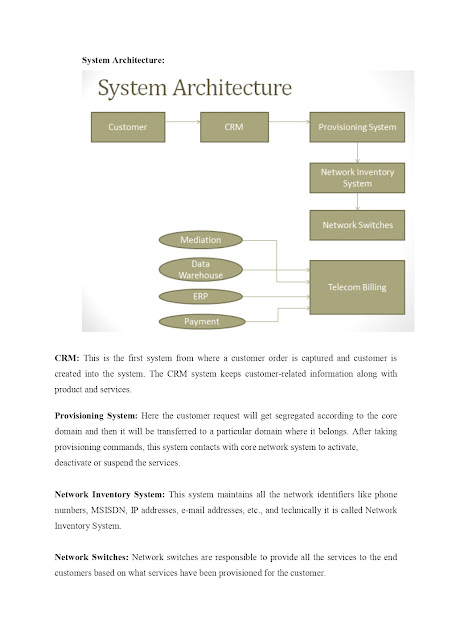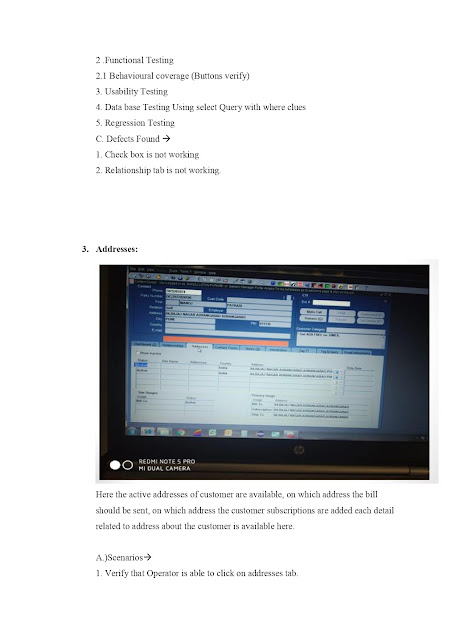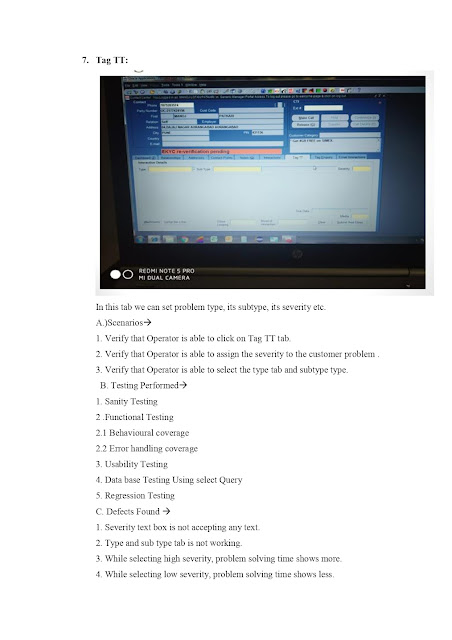Telecom Project Notes
1. Introduction :
-For sending voice ,data,picture,fax etc. from one point to other point by using electronic media is known as telecommunication.
-In short it terms as telecom.
-Examples -Phone , Radio , Television And Internet.
2.Parts of Telecom Domain :
-Business Support System (BSS): This domain works on all the needs of customer .like it is responsible for generation of bills, fulfilling additional requirements ,addressing each of the customer queries ,providing value added services to the end user etc (We work under BSS Domain)
-Operational Support System (OSS): This domain works on activating and deactivating the services for customer ,restoring the services etc.
3.Service Business Flow (The ways of revenue generation for service provider):
Provider charge their customer in multiple ways, some of the ways are listed below:
-One Time Charge: It is the charge at the time new connection.
-Rental Charges :These are the charges taken from the customer on monthly basis for example ,
your telephone monthly charges would be Rs. 499 regardless you use it or not
-Value added service charge :If any extra services are subscribed by the customer other than monthly
older than monthly pack then these charges are the value added charges
-Roaming charge
-Service Tax-GST
-Documentation charge-Printed Bill through post or Currier.
- SMS Charge
Ø 4.Different Ways of Billing:
1. Pre-pay Billing : where customer pays in advance and
after that starts using a service. Usually, prepaid customers do not receive
any invoice and they are charged in real time.
2. Post pay Billing: Here, customers buy products and
services and use them throughout the month, and by end of the month, invoices
are generated by the service provider and sent those invoices to the customers
to make their due payment.
3. Interconnect Billing: The network operator is usually
financially responsible for services provided to its customers by other
networks regardless of whether or not the customer pays for the service.
4. Roaming Charges: When a customer goes from one network
operator's coverage area to another operator's coverage area, first operator
would pay marginal charges to second operator to provide services to their
customers. Such type of charges are settled through roaming billing.
5. Convergent Billing: Convergent billing is the integration
of all service charges onto a single customer invoice.
Ø 5.Billing Systems:
Keeping track of all the billings and services would be
very difficult manually, so a billing system is used which provides flexibility
to both the service providers and customers.
Ø Features Of billing Systems:
1.
Rating &
billing: This involves rating the products or services
usage and producing monthly bills.
2.
Payment
processing: This involves posting of the customer payments
to customer's account.
3.
Credit control
and collections: This involves chasing the
outstanding payments and taking appropriate actions to get the payments.
4.
Disputes and
adjustments: This involves recording any customer disputes
against their bills and creating adjustments to refund the disputed amount in
order to settle the disputes.
Pre-pay and post-pay services: This involves supporting both pre-paid and post-paid
customer base.
5.
Multilingual
& multiple currencies: Multilingual and
multiple currencies support is required if the business is spread across the
globe and have multinational customers.
6.
Inter-carrier
settlements: This involves sharing of revenue between
carriers that provide services to each other's customers.
7.
Products &
services: This involves providing flexible way to
maintain various products and services and sell them individually or in
packages.
8.
Discount
applications: This involves defining various discount
schemes in order to reduce customer churn and attract and increase customer
base.
Technical Flow :
















0 Comments